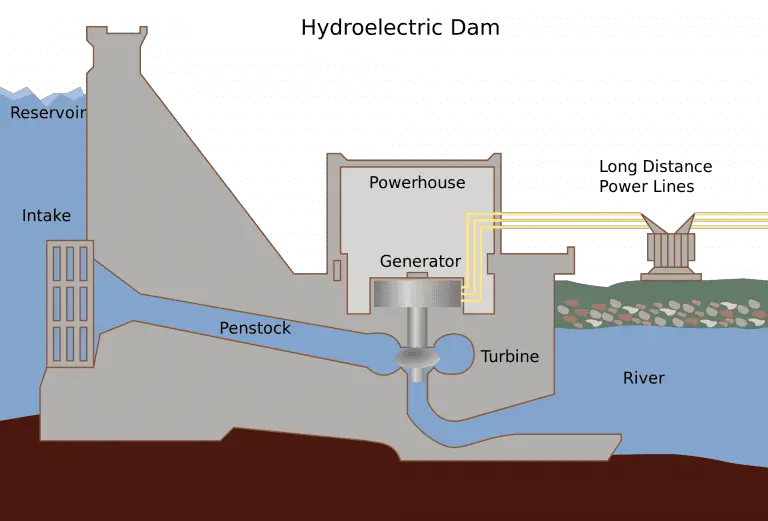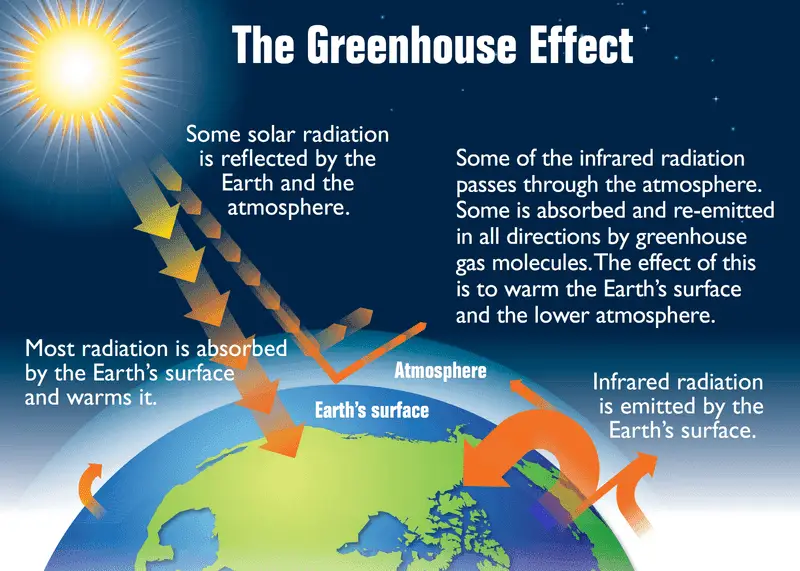18 Pros and Cons of Hydroelectric Energy
Check Out Every Advantage and Disadvantage of Hydroelectricity

Hydroelectricity is the process of using the waters kinetic energy as a constant source of fuel to move turbines.
As the water spins the turbines, magnets contained in the turbine rotate past a coil of copper wire to produce electricity. The water used to turn the turbine will then get returned to its water source found under the dam.
Approximately 85 percent of the worlds renewable energy currently comes from hydropower. Hydro is going to continue growing, the U.S.Department of Energy is reviewing the different ways that they can improve the environmental impact it is having on our ecosystems.
Hydro is going to continue to grow and has a lot of future opportunities that many people are not aware of. Current global hydropower production is estimated at 1,700 gigawatts, providing approximately 2 percent of total electric generating capacity.
The current largest producers of hydroelectricity are Canada, China, Brazil, and the United States[2].
Other places like Latin America, Central Africa, and India have large areas that would also be ideal for the creation of hydroelectric dams.
While these countries have access to an abundant source of energy, they have done little to build up the infrastructure needed to harness it fully.
Over the last 120 years, very little has changed for the generation of hydropower. But recently governments have again started reviewing current hydropower generation techniques. The goal is for us to find any possible ways that we can make the process even more environmentally friendly.
I have searched all over the net looking for every valid advantage and disadvantage of hydroelectricity.
So keep reading and decide for yourself if you think hydroelectricity is something we should continue investing in.
Hydropower Advantages And Disadvantages
The Advantages of Hydroelectricity
What Are The Pros of Hydropower
- Green Energy
- Renewable Resource
- Cost
- Reliable
- Safe
- National Energy Security
- Automation Capabilities
- Dams Can Get Scaled From Small to Massive Sizes
- Micro-Hydro Sites
1. Green Energy
Because hydropower does not cause pollution to get emitted when it is getting operated, it gets considered as a green energy source.
2. A Renewable Resource.
Hydropower uses the water flow as kinetic energy for its fuel source. Since our water cycles are endless and are a constantly recharging system, hydropower gets considered as a renewable energy source[6].
3. Cost
When you take into account the cost of hydropower spread out over the systems lifetime, it is one of, if not the most affordable power generation methods we currently have.
4. Reliable
It provides us with reliable power generation. As long as we have a source of flowing water, electricity can get created.
Because the Rivers, tides, and waves are constant, we are always going to be able to harness them to generate power.
The reliability of it has made it an integral part of our overall renewable energy replacements. It is also our only power source that can dispatch power to our grid immediately. Even when all other energy sources are inaccessible[11](like during the 2003 massive blackout experienced).
This unique ability is known as a blackstart. Blackstart allows hydropower facilities to resume operations in isolation without drawing on an outside power source[11].
We can also use a method called Pumped Storage.
Pumped Storage allows us to store energy from other renewable energies like wind and solar conserving them for future use.
The technology uses two different reservoirs(one above the other below). The water from the bottom tank gets pumped and stored in the higher level by the solar or wind energy.
Later, when we need to generate electricity, the water will get released from the higher reservoir, causing the spinning of the turbines.
5. Safe
Compared to many other forms of energy like fossil fuels and nuclear power, creating energy from hydropower can be a much more reliable and secure system.
6. National Energy Security
Hydropower can help countries reduce their dependence on fossil fuels, many of which need to get purchased from other countries.
Having to rely on another country to meet energy demands can put us in a very unfavorable position when trying to negotiate deals with these countries.
7. Automation Capabilities
Much of the everyday tasks at a hydro dam can get automated. The more process we can automate the fewer employees that get needed on site.
Most of the equipment contains Integrated instrumentation, remote control, and electrical solutions with multiple levels of redundancy built-in.
All of this information gets fed back to a monitoring station allowing just a few people to monitor large plants.
Having only a few employees on-site helps to keep the price of hydroelectricity low.
8. Dams Can Get Scaled From Small to Massive Sizes
The equipment used can get scaled up or down, depending on the requirements.
From small pieces of equipment that can help you add some extra power to our houses. All the way up to full-scale industrial power plants large enough to provide power to an entire town or city.
For residential home systems, many small hydropower generation systems can offer more economic advantages to the homeowner than a solar-powered system. These hydro systems also generally last for a more extended period than their solar counterparts.
9. Micro-Hydro Sites:
Many of the environmental impacts to the environment do not apply to micro-hydro setups.
These systems do not require any reservoir of water to operate efficiently. These changes limit many of the original negative aspects of hydropower.
Unfortunately, these systems tend to generate significantly less energy than their reservoir counterparts. But the number of different locations that are suitable for these systems could help us to produce significant amounts of electricity.
The Disadvantages of Hydroelectricity
What Are The Cons of Hydropower
- Limited Reservoirs Locations
- Expense
- Possible Lack of Water(Depending on Location
- Channel Modification
- Fish Ladders
- Greenhouse Gases
- Land Use
- Safer Renewable Options Are Available
- Raises The Levels of Pollutants in Water
Hydropower generators do not directly emit air pollutants.
However, the dams/reservoirs, and the operation of hydroelectric generators can affect the environment[3].
1. Limited Reservoirs

For building our traditional hydroelectric stations, there are a limited number of places that meet all the criteria required.
Luckily, thanks to advancements in green technology, we can now harness other forms of water power generation methods like Tidal Energy.
Advancements are also getting made in using the waves of water as an energy source.
2. Expense
The initial construction and engineering work make the initial expense of bringing hydroelectricity extremely high.
After the original construction expenses are done, the lifetime maintenance is remarkably low for hydropower.
3. Possible Lack of Water(Depending on Location)
Depending on the location of the reservoirs having a long season with little rain may prevent us from having enough water to fuel power generation.
4. Channel Modification
Channel modification and having mass amounts of water in a reservoir creates several issues. The difference in the water quality between the stagnant water in the tanks is different compared to the flowing river water and will generally increase algae production.
Another possible problem is when we store to much water upstream, this can cause drought conditions further downstream.
Many hydroelectric operators need to release a specific amount of water several times a year. The water release helps to ensure that water downstream does not reach dangerously low levels[7].
Altering the depth of the water can also cause changes to the waters natural temperature.
These temperature swings can negatively impact plants and fish in the surrounding environment.
5. Fish Ladders
Fish ladders get set up to help the fish get around and over the dams to their spawning grounds.
These Ladders and elevators generally get added to reduce the number of fish that will pass through the turbines.
The Safe Harbor Dam on the Susquehanna River in Pennsylvania is using elevators to lift the migrating shad to the top of the reservoir.
Current existing turbine technology causes approximately 5 to 10 percent of fish deaths. The U.S. Department of Energy is currently producing new turbines to help reduce these deaths down to 2 percent.
Many of the older dams got designed without alternate paths for the migration of fish. These dams present as a barrier to our fish and their migration patterns.
The department of energy has created a device called the salmon cannon, which can shoot adult salmon over the dam through the use of a tube.
6. Greenhouse Gases

The technology used in hydroelectricity does not technically create any greenhouse emissions.
But the reservoirs in use will emit some amount of methane, and CO2 resulting from the decay of vegetation from the changing water levels. But these gases are not specific to power generation.
All reservoirs emit these gases whether they get used for electricity generation, irrigation, flood control, etc.
It gets estimated that 79% of the greenhouse gas emissions from reservoirs are methane. While this gas has a short life in our atmosphere, it also has a strong warming effect[9].
Possible solutions being review are to manage the water's elevation more carefully and controlling erosion in upstream watersheds[5].
Another great new option developed from scientists in Brazil at the National Institute for Space Research has another possible solution.
They are looking into utilizing a system to capture the methane getting released from the reservoir. We can then use the captured methane to generate further electricity[8]. Remember, methane make up the majority of the gas getting released.
So Brazils solution would not only significantly reduce greenhouse gas emissions from reservoirs(remember 79 percent of the gas is methane). But it also helps us to increase our energy generation capabilities from hydroelectricity even higher.
The creation of the Reservoirs also contributes to the total amount of emissions getting released into our air.
The plants and power lines also contribute to the total amount of emissions getting released into our atmosphere.
But these CO2 emissions are quickly offset when the lifetime use of the operation gets taken into account.
7. Land Use
When we build up hydroelectric projects, their size can vary greatly. When these plants get built up on flat areas, it tends to require a much larger area of land compared to plants that get built on hilly areas and canyons. Because of how deep Hily areas and canyons are, it allows the reservoirs to hold a much larger volume of water in a smaller space.
For example, the large Balbina hydroelectric plant, built in the flat area of Brazil caused flooding of 2,360 square kilometers to create the power station.
All of this land used has only resulted in power generation capabilities of 250 MW. That breaks down to approximately 45 square kilometers per MW.
Now compare this to a small run-off river plant placed into a hilly location can generate an MW on as little as a 2.5 square acres[4].
When we flood the land to create a hydroelectric reservoir, it can have a substantial negative impact on the environment. From destroying forests and wildlife habitats and in extreme cases like the Three Gorges Dam in China, entire communities needed to get removed to make way for the reservoir.
To help reduce these land requirements, we are starting to look at modify existing non powered dams instead of creating any new barriers.
Performing these modifications would allow us to generate up to an additional 12 gigawatts of renewable energy and cost significantly less than creating brand new powered dams[5].
In the United States, there are currently 85, 000 dams that do not generate any electricity.
Of these, the DOE estimates about 1,800 could be modified to generate electricity. The DOE estimates that at least 1,800 of these dams can get adjusted to begin creating extra power for us[5].
In China and India, people are getting removed from their lands for the creation of new hydroelectricity plants and reservoirs.
In many cases, these are the most impoverished populations in these countries that this happens to. Many of them receive little compensation, and sometimes none at all.
The Three Gorges Dam in China displaced more than 1.2 million people, flooding 13 cities, 140 towns, and 1,350 villages[10].
8. Safer Renewable Options Are Available
For many countries, Wind and Solar energy have reached lower prices than implementing hydroelectricity. These options are also seen as less risky to the environment and can get deployed much more rapidly.
The DOE is currently working on developing a modular plug and pay hydropower units that will have the ability to get installed in more locations than our current solutions.
The goal of these plug and play units are to reduce the impact they can have on healthy stream functions.
Other water energy sources like tidal energy, DTP(dynamic tidal power), and wave energy are getting invested in heavily. Many beleive they may provide a much lower number of ecological effects on our environment.
9. Raises The Levels of Pollutants in Water

Reservoirs have also shown to trap many different pollutants from our past industrial practices. These pollutants will flow downstream and end up concentrating behind the dams[5].
Fish that are in these waters can have high levels of these pollutants accumulate within them.
The chemicals make eating them dangerous for human and other wildlife. These chemicals can also pose a threat to our drinking waters.
Inclosing
While I beleive, hydroelectricity still has a far way to go before it can genuinely get considered as a green technology.
I am glad to see we are coming up with new ways to generate power from the water such as Tidal generation, wave generation, and dynamic tidal power.
Since many of these new methods do not require any reservoirs, they eliminate most of our current problems from hydroelectricity.
You May Also Like
Hydroelectric Power Calculator25 Pros and Cons to Wave Energy
Dynamic Tidal Power: An Amazing Reliable Energy
[1]https://ensia.com/features/hydropower/
[2]https://www.manufacturing.net/article/2018/09/examining-pros-and-cons-hydropower
[3]https://www.eia.gov/energyexplained/index.php?page=hydropower_environment
[4]https://www.ucsusa.org/clean_energy/our-energy-choices/renewable-energy/environmental-impacts-hydroelectric-power.html
[5]https://ensia.com/features/hydropower/
[6]https://www.energy.gov/eere/water/benefits-hydropower
[7]https://www.greenandgrowing.org/environmental-impacts-of-hydroelectric-power/
[8]https://www.forbes.com/sites/jamesconca/2014/11/04/the-hidden-cost-of-hydroelectric-power/#28dcad1e21af
[9]https://waterkeeper.org/hydropower-is-not-clean-energy/
[10]https://populationeducation.org/what-are-pros-and-cons-hydropower-and-tidal-energy/
[11]https://www.hydro.org/waterpower/why-hydro/reliable/